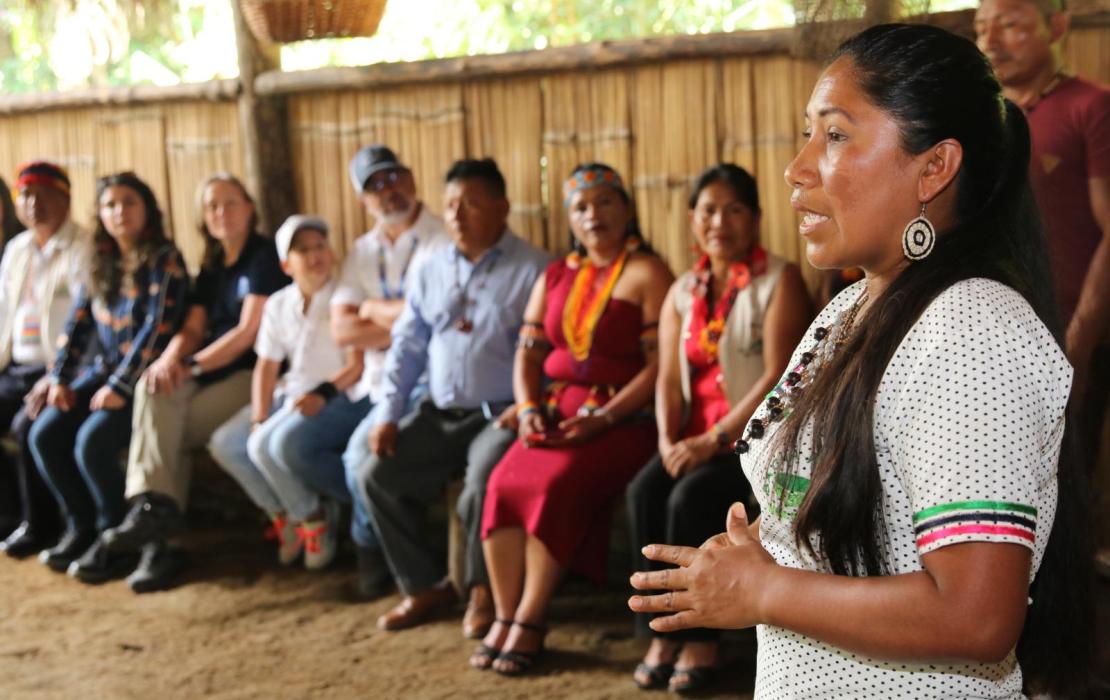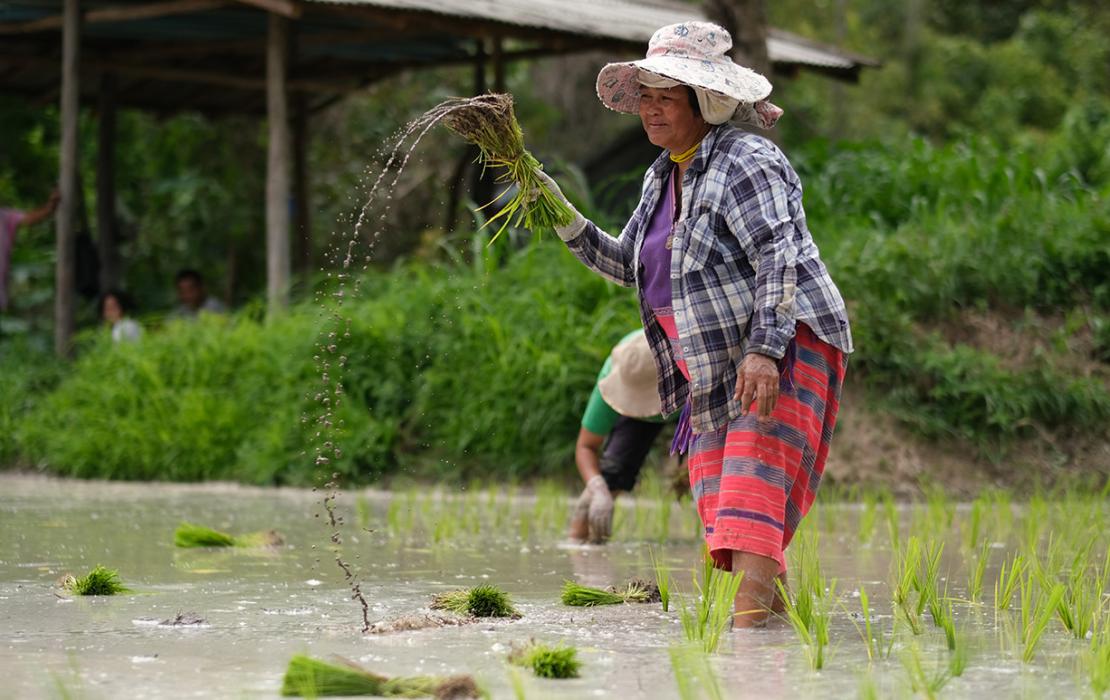
Summary
- Indigenous Peoples are custodians of unique knowledge and practices that emphasize the balance between humans and the natural world.
- Many Indigenous traditional practices offer effective climate solutions, such as sustainable agriculture systems and climate-resilient water management.
- By safeguarding key ecosystems that act as carbon sinks and protect biodiversity, Indigenous Peoples provide an environmental service to the rest of the world. However, they are frequently excluded from decision-making processes and their rights to lands and resources are not always respected.
- It is impossible to achieve the goals of the Paris Agreement without full and effective participation of Indigenous Peoples and their free, prior and informed consent.
- Governments must fully recognize the rights of Indigenous Peoples, provide them with direct access to climate finance and capacity building, and integrate Indigenous knowledge into climate policy.
Why does Indigenous knowledge matter when it comes to climate action?
Indigenous Peoples are custodians of unique knowledge systems, innovations and practices that have been passed down through generations and have allowed different cultures and communities in many parts of the world to live sustainably, emphasizing the balance between humans and the natural world.
Many Indigenous traditional practices are rooted in a deep understanding of and respect for ecological systems and promote sustainable resource use. These practices have a minimal impact on the environment and are highly adaptive to ecological changes, fostering healthy and resilient ecosystems.
Because of their ecological knowledge, which is intergenerational and community-based, Indigenous Peoples were among the first to notice the early signs of climate change. Now more than ever, as the climate crisis intensifies, their knowledge and practices offer valuable climate solutions that can advance mitigation efforts, enhance adaptation strategies and build resilience. This knowledge can also complement scientific data with precise landscape information that is critical to evaluating climate change scenarios.
What are some examples of Indigenous knowledge applied to climate solutions?
The milpa, a traditional farming system of the Indigenous Maya in Central America and southern Mexico, is a sustainable agricultural model that involves rotating agricultural plots – usually with corn, beans, squash and other vegetables – within a forested area. Importantly, this rotation involves the planting of multiple crops while allowing for natural forest regeneration in previously cultivated plots. As a result, these “forest gardens” maintain high levels of biodiversity and soil fertility by preserving a mosaic of forest and agricultural habitats, thereby contributing significantly to climate change mitigation and adaptation efforts.
Similarly, in countries in West Africa, like Mali and Burkina Faso, Indigenous Peoples have developed sophisticated agroforestry systems over centuries. These systems, in which crops coexist with trees, help reduce soil erosion and improve soil fertility. Meanwhile, crop diversification reduces the risk of total crop failure due to pests, diseases or extreme weather events. These strategies ensure the availability of food and protect livelihoods in the face of climate extremes, such as droughts and heavy rains.
Aboriginal Peoples in Australia have long practiced traditional fire management, known as "cultural burning" or "cool burning," to manage the landscape. This practice involves the controlled use of low-intensity fires to reduce fuel loads, manage vegetation and promote biodiversity. Indigenous Peoples often possess deep knowledge of fire behavior, weather patterns and ecological responses, allowing them to conduct burns safely while reducing wildfire risks.
Rangeland restoration in Masai communities in Tanzania. The use of ancestral knowledge and native plants help restore biodiversity, stabilize watersheds, increase soil moisture and combat invasive species. Photo: UNDP Tanzania / Phil Kabuje
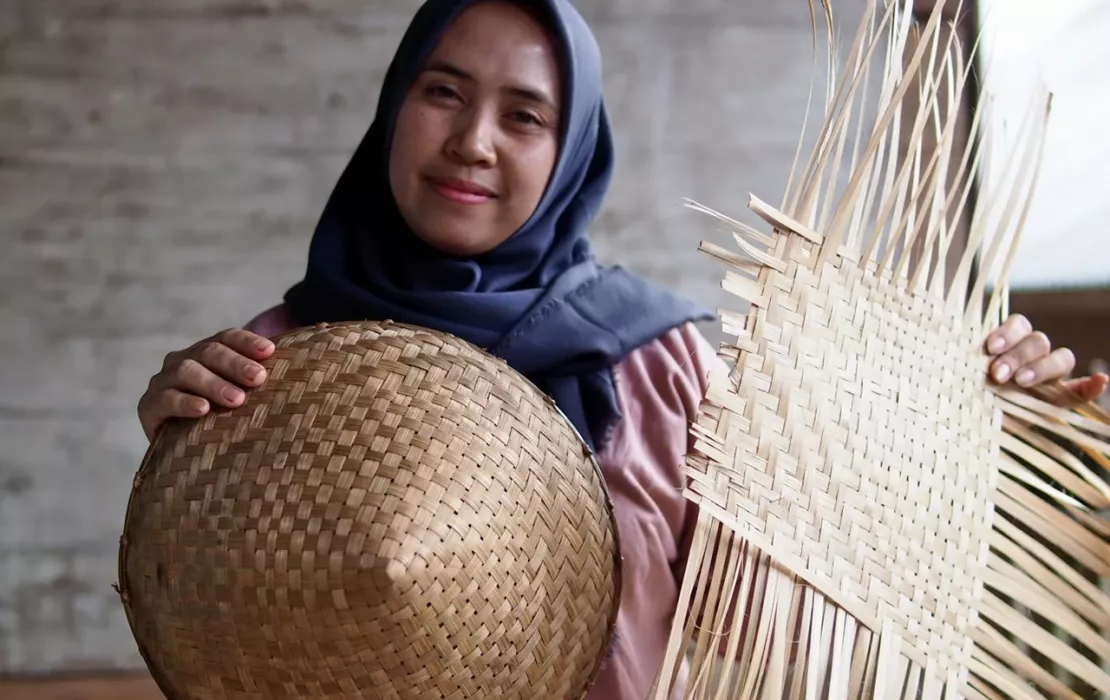
Yunengsih, a member of the Kasepuhan Cibedug Indigenous Peoples in Indonesia, holding a bamboo hat. Her community uses traditional practices to manage and preserve the forests in their ancestral lands. Photo: UNDP Indonesia / Roy Prasetyo
Why are Indigenous Peoples key agents of change in climate action?
Indigenous Peoples manage around 25 percent of the world’s land, which contains much of the planet’s biodiversity and the carbon stored in soil and biomass. A large majority of this land is covered by forests that are central to the traditions, cultures and livelihoods of 70 million Indigenous Peoples, who provide environmental stewardship to at least 36 percent of the world’s intact forests.
Research shows that despite increasing external pressure on their land, many forests and other ecosystems within areas managed by Indigenous Peoples are in better health than nature outside these areas. By safeguarding these key ecosystems that act as carbon sinks and protect biodiversity, Indigenous Peoples provide an environmental service to the rest of the world, which is often unrecognized, and merits increased political protection and financial support.
Indigenous Peoples have also developed adaptive strategies over centuries to cope with environmental changes. Their knowledge systems offer valuable insights into climate-resilient practices such as agroforestry, water management and disaster preparedness. Examples of this are the use of traditional crops resilient to drought and the construction of traditional houses that require minimal water usage in dry environments.
Nature-based solutions and circular economy have been a way of life for millennia for Indigenous Peoples worldwide, and this knowledge is key to climate action. As such, Indigenous Peoples hold the potential to be protagonists and leaders in decision-making processes on climate action. The Local Communities and Indigenous Peoples Platform works to ensure the integration of Indigenous knowledge and practices into international and national programmes and policies, and helps Indigenous Peoples prepare to participate and better engage in climate negotiations.

José Rivera, member of the Indigenous Shuar community in Ecuadorian Amazon, works in an organic coffee farm. Photo: UNDP Ecuador/PRO Amazonía
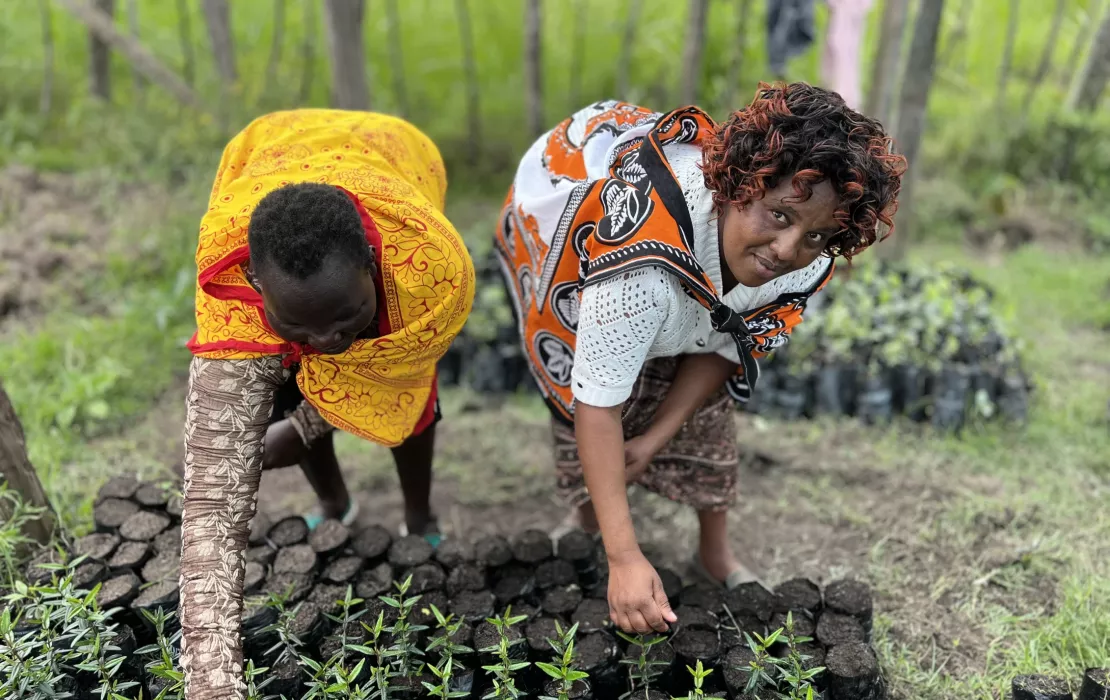
Paran Women Group is a group of Indigenous women from Kenya dedicated to environmental restoration through reforestation. Photo: Ecomedia Kenya
Why is it important to recognize, promote and protect Indigenous knowledge?
Indigenous knowledge can greatly enrich climate policies and actions. By involving Indigenous Peoples as key players in climate planning and implementation, it is possible to develop more contextually relevant and effective solutions, fostering innovation, enhancing local ownership and ensuring a larger impact of climate initiatives.
However, due to historical marginalization and political and economic power imbalances, Indigenous Peoples have often been overlooked as key agents of change. They are frequently excluded from decision-making processes on environmental policies and their rights to lands and resources are not always respected. This exclusion hampers their ability to manage the harsh impacts of climate change and too often leaves these populations disproportionately affected by its impacts.
Scaling up actions that address vulnerabilities and enhance Indigenous Peoples’ adaptive capacity is crucial for promoting social equity and justice. Indigenous Peoples’ rights to their ancestral lands, territories and resources, their way of life, and to self-determination must be respected and included across climate policies and actions. It is impossible to achieve the goals of the Paris Agreement without full and effective participation of Indigenous Peoples and their free, prior and informed consent. This includes ensuring direct access to climate finance, recognizing the role of Indigenous women as knowledge bearers and of young people as future guardians of this traditional knowledge.
At COP26, leaders acknowledged the vital role of Indigenous Peoples in climate action and inclusive and sustainable development, as well as the importance of securing their land and resource rights. Governments and private philanthropies pledged US$1.7 billion to fund Indigenous Peoples’ efforts. Despite these pledges, more is needed to ensure full participation and leadership of Indigenous Peoples and recognition of Indigenous knowledge.
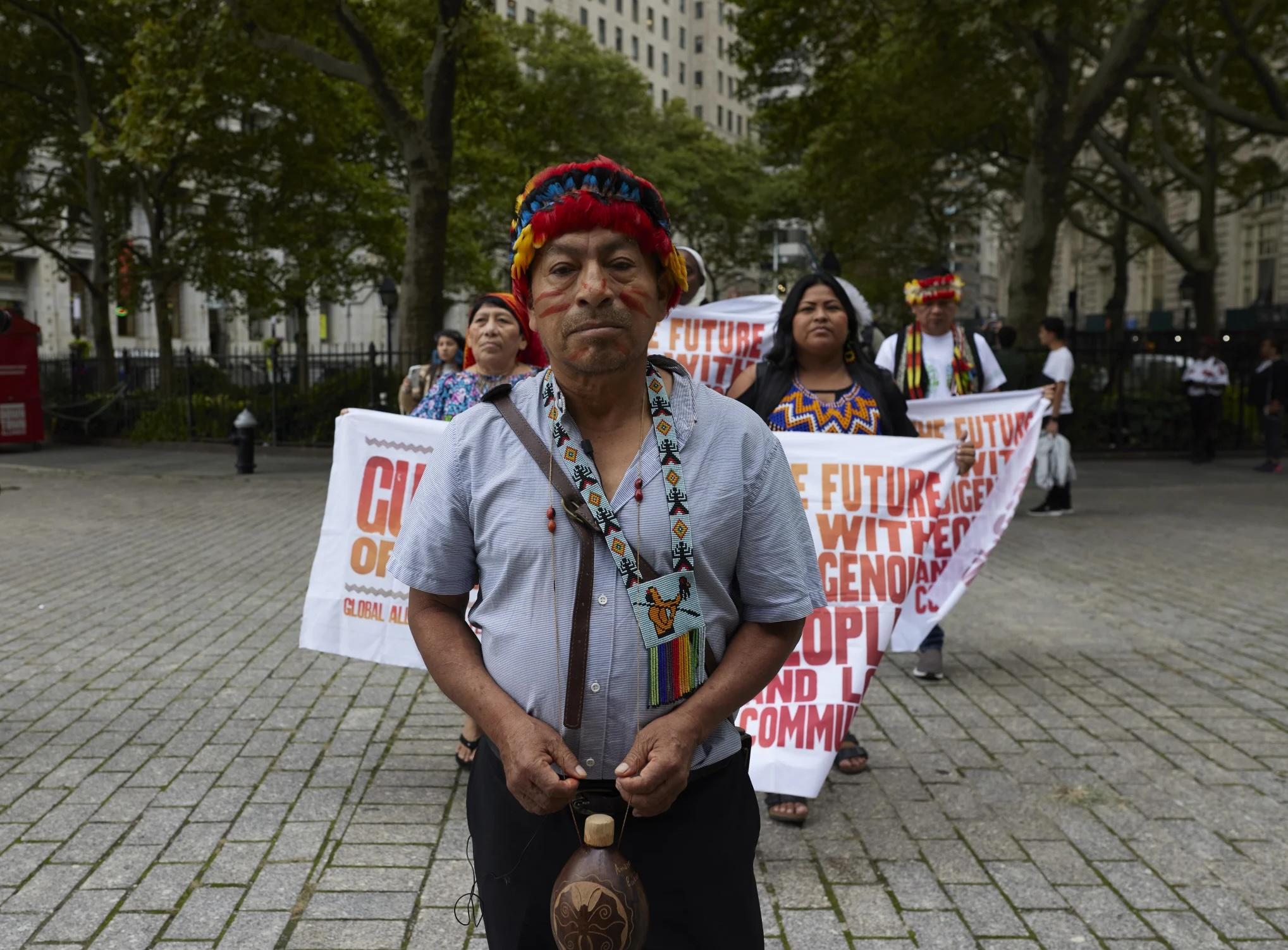
Ricardo Tsakimp is a Shaman belonging to the Shuar Indigenous community in Ecuador. He has devoted his life to integrating traditional medical knowledge into Ecuador’s health system. Photo: UNDP / Colin Morvan
How is UNDP supporting Indigenous Peoples and their knowledge?
Over the past three decades, the Small Grants Programme (SGP), financed primarily by the Global Environment Facility (GEF) and implemented by UNDP, has been pioneering in its engagement with Indigenous Peoples. The SGP has invested around $163 million to implement 5,832 projects that have benefited Indigenous Peoples in areas such as biodiversity conservation, climate change adaptation and mitigation, land degradation, chemicals and waste, and international waters. Moreover, under the Global Support Initiative to territories and areas conserved by Indigenous Peoples and local communities (ICCA-GSI), the SGP provided direct financial support to Indigenous Peoples and local communities in 50 countries on biodiversity conservation, sustainable livelihoods and resilience to climate change.
The UN Collaborative Partnership on Reducing Emissions from Deforestation and Forest Degradation (UN-REDD) has devoted significant support to ensure that climate action in the forest sector includes and respects the rights of Indigenous Peoples. Led by UNDP, it was the first UN programme to incorporate Indigenous Peoples with full decision-making power in its governance. UN-REDD also pioneered guidelines for the application of Free, Prior, and Informed Consent (FPIC) into its programming.
The Equator Initiative recognizes and celebrates outstanding Indigenous-led and community-based organizations and their solutions to the climate crisis. In Bolivia, the youth-led Uru Uru Team used their knowledge of native plants to develop floating rafts that have helped reduce the pollution of the Uru Uru lake, central to their culture and development.
With funding from the Government of the UK’s Department for Environment, Food and Rural Affairs (DEFRA), a system of small grants is supporting Indigenous communities in four countries where forests are crucial to achieving their climate pledges: Cambodia, Colombia, Ecuador and Kenya. The grants aim to strengthen initiatives contributing to reducing forest degradation and deforestation.
In the Philippines, UNDP supported the Indigenous Umayamnon to tackle deforestation and pollution by promoting the planting of bamboo and cocoa by local farmers. The support covered the training on cultivating, harvesting and marketing bamboo and cocoa and it was facilitated by the Adaptation Fund Climate Innovation Accelerator (AFCIA), an initiative that provides small grants to scale-up adaptation efforts at the local level.
In Uganda, as part of a project funded by the Green Climate Fund, the blending of Indigenous forecasting methods with scientific weather forecasts is enhancing the reliability and credibility of climate information reaching communities. This process fosters trust and confidence among farmers while supporting more informed decision-making on what and when to plant and harvest.
Moreover, through its Climate Promise initiative, UNDP actively works to ensure the inclusion of Indigenous Peoples’ needs and views in national climate pledges, or Nationally Determined Contributions (NDCs), and their participation in climate planning and policy processes.
To protect and foster full respect for Indigenous Peoples' rights, UNDP applies its Social and Environmental Standards to all projects that may affect the human rights, lands, natural resources, territories, cultural heritage or traditional livelihoods of Indigenous Peoples.

Members of the Uru Uru Team in Bolivia examining floating rafts based on native plants and ancestral knowledge, which help reduce pollution of the Uru Uru Lake. Photo: UNDP Equator Initiative/WTYSL

Traditional beekeeping practices in Yucatan, Mexico, encourage sustainable land use. Beekeepers become advocates for forest conservation, as their livelihoods depend on the health of these ecosystems. Photo: UNDP / Roxana Auhagen
What actions can governments and policymakers take to promote Indigenous knowledge?
Governments and policymakers can take several actions and policy measures to include Indigenous knowledge into climate strategies and action plans:
- Recognize and respect Indigenous land rights and traditional territories. This is not only a matter of justice and legal obligation but is key to promoting environmental sustainability and cultural preservation – all of which are vital for Indigenous Peoples as they sustain their identity, social cohesion, knowledge, rights and resilience.
- Establish legal frameworks for Free, Prior, and Informed Consent (FPIC). FPIC contributes to the protection of Indigenous Peoples’ collective rights, and specifically their right to self-determination, their right to be consulted, their right to participate in decisions that may affect them, and most importantly their rights to their lands and resources. In practice, FPIC may be understood as a process where Indigenous Peoples who may be affected by a project are meaningfully engaged in project design, implementation and decision-making, are fully informed and are able to grant or deny consent prior to implementation of any activities that may affect them.
- Integrate Indigenous knowledge into social and environmental policy frameworks at local, national and regional levels. Collaborating with Indigenous communities and respecting their knowledge and practices is essential for effective, culturally sensitive, and sustainable environmental conservation efforts. Moreover, governments should enact laws that recognize and protect Indigenous intellectual property and knowledge.
- Support education and capacity building. Incorporating Indigenous history, culture and knowledge systems into education programmes is key to preserving their heritage.
- Provide direct access to climate finance. Climate finance directed by Indigenous Peoples can support projects that not only mitigate greenhouse gas emissions but also promote Indigenous knowledge and practices, strengthen Indigenous Peoples’ rights and governance, and enhance their resilience.
